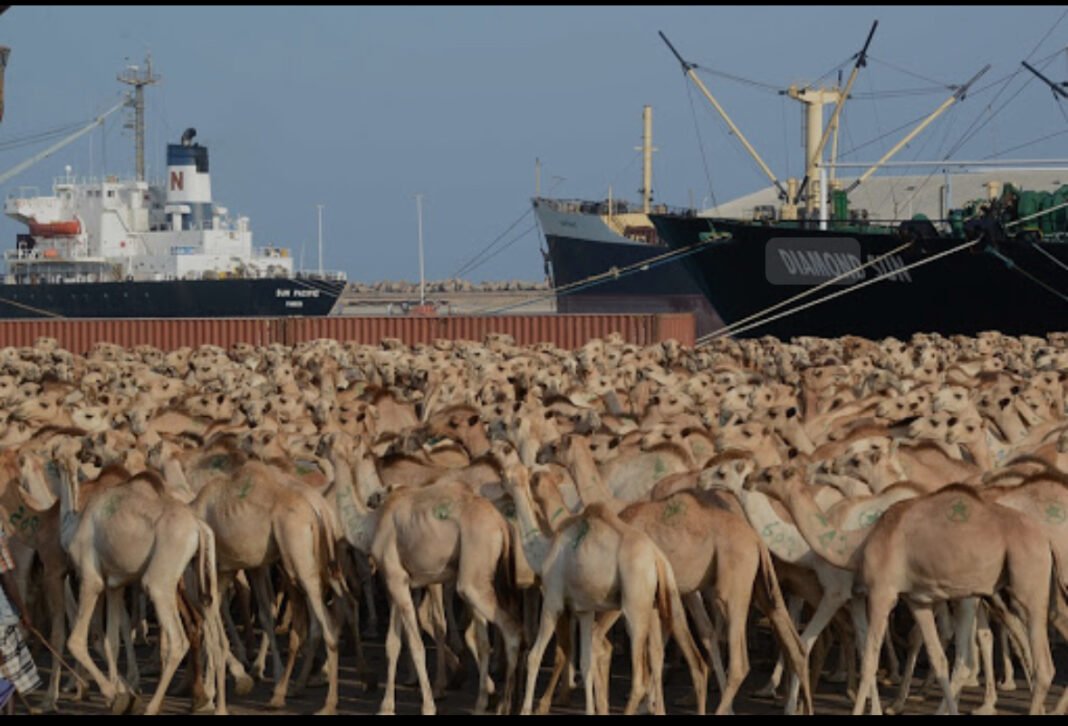MOGADISHU, (HAN) — In the dusty livestock markets of Beledweyne, Somali traders shout over the bleating of goats and the lowing of cattle, negotiating deals that can reach hundreds of thousands of dollars. For the country’s pastoralists, these markets have become a lifeline. Somalia’s livestock exports are projected to surpass $1 billion this year, driven by growing demand from Gulf nations and declining competition from traditional exporters like Sudan and Australia.
Revenue from livestock exports jumped from $523 million in 2021 to $974 million in 2024, and government officials expect further growth in 2025. “The increase is driven by two main factors: the conflict in Sudan, which stopped its exports, and Australia’s planned phase-out of livestock shipments by 2028,” said Qaasim Cabdi Macalin, director of animal health at the Ministry of Livestock. “Our proximity to Saudi Arabia and the UAE allows for faster, more efficient export operations.”
For pastoralists like Mohamed Abdi, who leads a herd of 120 camels across central Somalia, the surge in exports has been transformative. “Before, it was hard to sell our animals for a fair price. Now, traders come to our villages, and we can earn enough to feed our families and send children to school,” he said.
The scale of Somalia’s livestock trade is impressive: an estimated 57 million animals roam the country, with four to six million exported annually, including sheep, goats, camels, and cattle. In 2024, Saudi Arabia alone imported $715 million worth of Somali livestock.
Beyond revenue, the livestock trade supports millions of livelihoods—from herders in rural villages to transporters, traders, and port workers in Mogadishu. Analysts say that with better investment in animal health, transport infrastructure, and trade regulations, Somalia could further cement its position as a leading livestock supplier in the Gulf.
Despite the sector’s growth, Somalia’s 2025 national budget, projected at $1.36 billion, still relies heavily on international aid. Yet for pastoralists on the frontlines of this booming trade, the rising demand for Somali livestock represents hope, stability, and a chance to rebuild lives amid decades of conflict and economic uncertainty.





